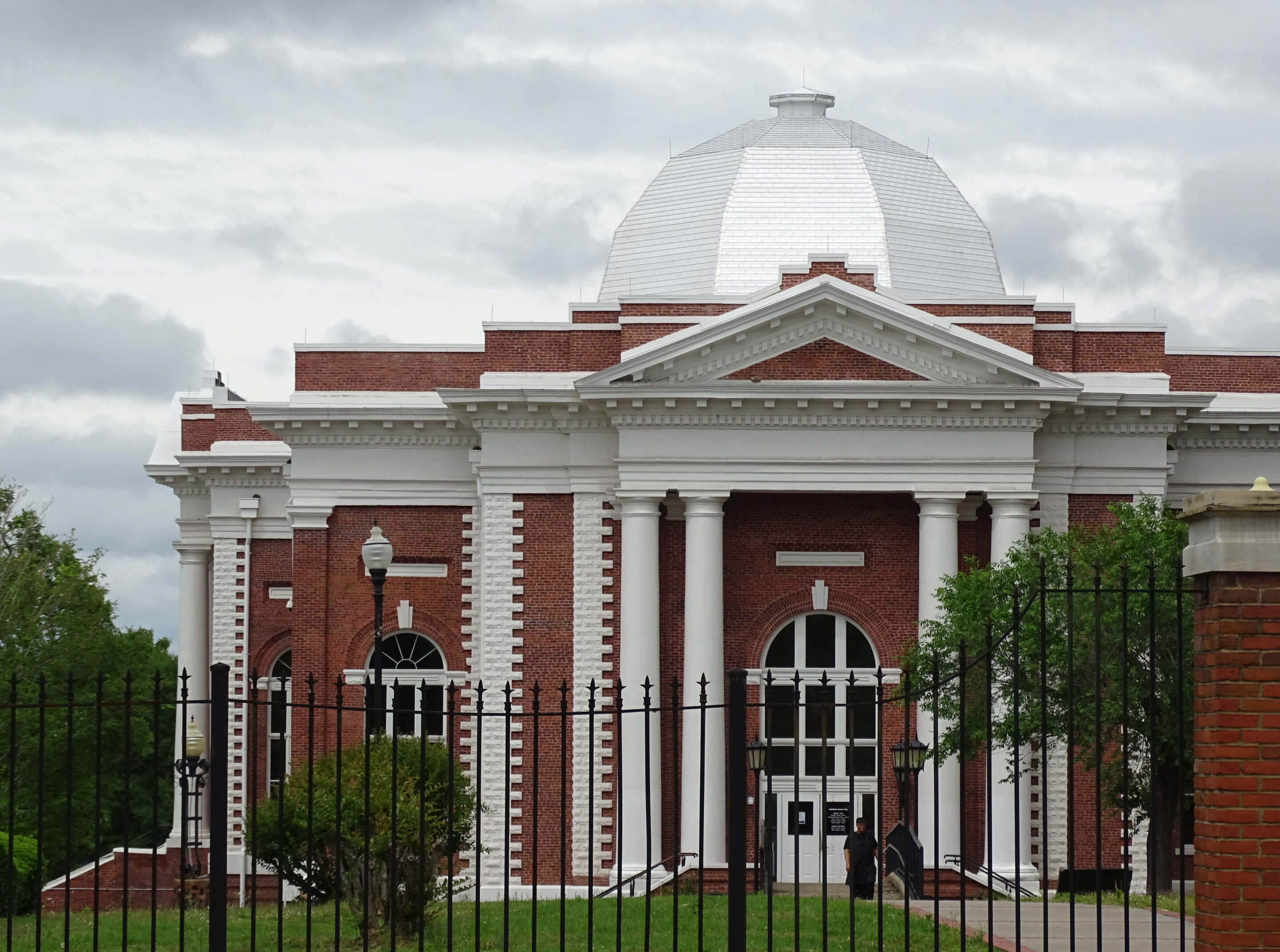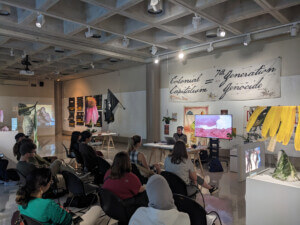Intentionality. Persistence. Commitment. These are key actions that come to mind if you ask how architects create institutional change and real diversity within their companies, according to Melvalean McLemore, Anzilla Gilmore, and Zhetique Gunn, the three cofounders of a new professional development program (PDP) for architecture students at historically Black colleges and universities (HBCUs). The trio are Texas architects and designers who recognized the need for equity in architecture through reframing how designers from HBCUs are viewed by the architecture profession. These women are currently building an accessible network supported by the National Organization of Minority Architects (NOMA) to match AEC firms with diverse architecture students.
McLemore, Gilmore, and Gunn were all working in Houston when they cofounded the PDP in 2020. They were inspired by AN’s June 2020 Trading Notes panel titled “Concrete Steps to Improve Racial Equity in the Architecture Workplace,” which featured Jonathan Moody, CEO of Moody Nolan. (McLemore works in the firm’s Houston office; Gilmore is the director of project management at Rice University’s FE&P Department; Gunn is a designer at Perkins&Will in the Washington, D.C., office.) Moody advocated for increasing touch points between HBCU architecture students and architecture offices, as students from the seven HBCUs with a dedicated architecture program account for roughly 50 percent of Black and Brown emerging professionals in the field. HBCU students are often overlooked and underutilized after they graduate; many leave the profession to gain success in another field. Gilmore and Gunn graduated from Prairie View A&M, one of the seven HBCUs that grant a degree in architecture, and McLemore is an alumna of the University of Houston; while in school, she was one of only a few Black architecture students at the university. All three women were acutely aware of the barriers and burdens that BIPOC architecture students face when entering the profession. They wanted to initiate the programming and mentorship to increase these key touch points for HBCU students.
After months of planning, the PDP started as a speed-networking event in 2020 open to all HBCU students, with over 90 students and 150-plus design professionals attending. A virtual career fair followed in January 2021, with 60 vetted students in their final years of school and/or programs requiring internships in attendance. These first two events were entirely virtual, which addressed a barrier to entry for BIPOC students that McLemore calls the “cost to be seen”: a factor affecting attire, time and access, and networking capabilities for HBCU students seeking experience. From its initial programming, the PDP combated the “best and brightest” mentality in firms, which falsely justifies a lack of BIPOC representation through the assumption that HBCU students lack the talent and value of their non-HBCU counterparts. Firms often prioritize emerging professionals who are a “cultural fit rather than a cultural add,” Gunn told AN, but the profession grows stronger when we celebrate the wealth of experience that HBCU students bring when we advocate for their representation at every level of the industry. McLemore, Gilmore, and Gunn knew that they could tackle these issues through a pipeline program for HBCU students to gain skills and visibility, to destigmatize their contribution to the profession. “We’re vetting these diverse up-and-coming students and handing you the best and brightest,” McLemore said. In the PDP’s first year, over one-third of participants secured job opportunities. Two years in, the HBCU PDP has grown from a speed mentoring event to a multifaceted professional development program connected to NOMA and The NOMA Charitable Equitable Foundation.

With 88 students and 30 firms currently involved nationwide, the NOMA HBCU PDP is open to any upper-level architecture student or recent graduate from one of the seven architecture degree–granting HBCUs, as well as any firm committed to diversity and equity. The PDP includes nine months of events (speed mentoring; a career fair; and seminars on the workplace, interview skills, and financial planning) followed by potential job opportunities and quarterly check-ins for a participant’s first five years as an emerging professional. In partnership with NOMA, HBCU students have greater visibility, resources, and funding within a nationwide network of BIPOC designers. When Gilmore described the PDP, she said that every student is “making connections, building their networks, gaining the skills and confidence to succeed at their school and other local career fairs, and ultimately how to advocate for themselves in a profession that does not teach students how to do that.”
The PDP’s founders are optimistic about the future. With NOMA as an anchor partner, they hope to add staff, increase their grant program for students (which currently offers amounts from $1,500 to $2,500), and champion self-advocacy and professional growth in HBCU architecture students. They want these emerging professionals to find mentors who look like them as well as ones who don’t. Jonathan Salley, a fifth-year Howard University student who was part of the 2020 cohort, noted that “[the career fair] was helpful because … I got stronger and better at expressing my personality, sharing my passions, and being more engaged.” After her involvement in the program, Fikir Kebede, from the University of the District of Columbia, remarked that “the Annual HBCU professional development program [was] a great networking experience to find jobs, internships, and mentors.”
The NOMA HBCU PDP fosters mentorship and self-advocacy through increasing touch points for HBCU students. The program provides the resources to transform a student’s trajectory in the profession and establishes more office cultures that thrive owing to a diversity of experience among employees.
“It makes my heart warm to see this many students with such great work,” said HBCU graduate Reginald Truxon, of Gensler D.C., following his professional involvement in the program. The PDP challenges students to invest time in networking and mentorship while simultaneously holding both architecture schools and firms, as stakeholders, directly accountable for making space and fighting for equity in architecture. From McLemore’s perspective, “diversity and inclusion will come from equity. Focusing on the ‘d’ and the ‘i’ is box-checking … prioritizing [equity] is how you level the playing field.” Firms that take on this call to action embody what Gunn refers to as “the design ethos they’re speaking about” when they plug design and inclusion in the profession. The PDP asks us as architects to be intentional in shaping the people who create our built environment, persistent in our work to make architecture a career field that welcomes everyone, and committed to the mission of equity in design.
Caitlin Dashiell is a Houston-based designer and writer working in architecture and public art.











